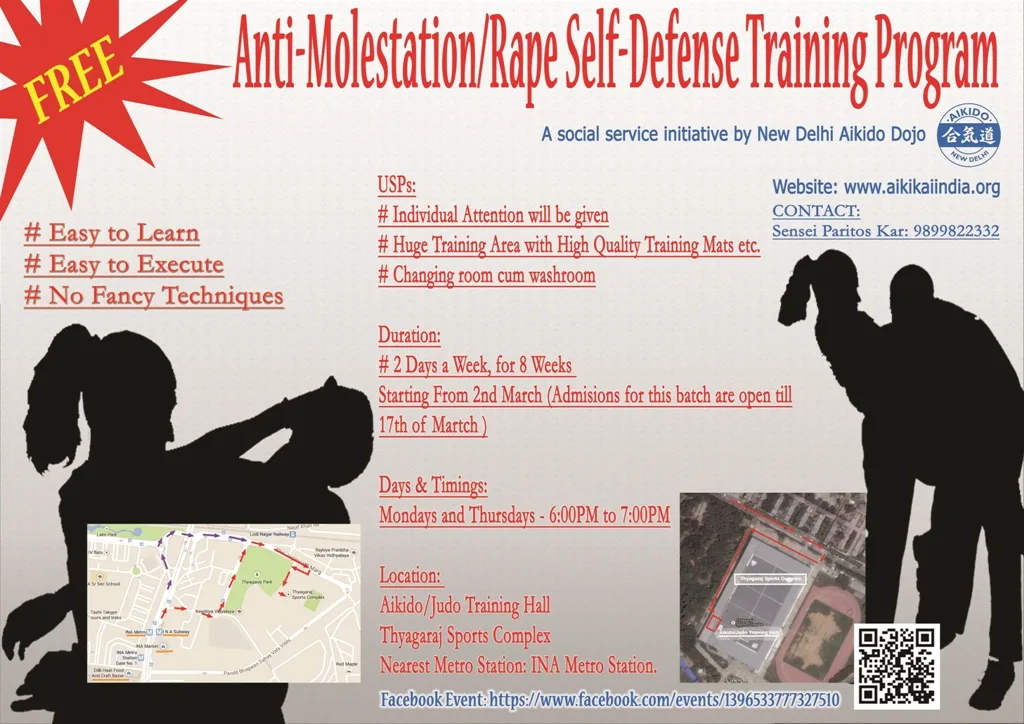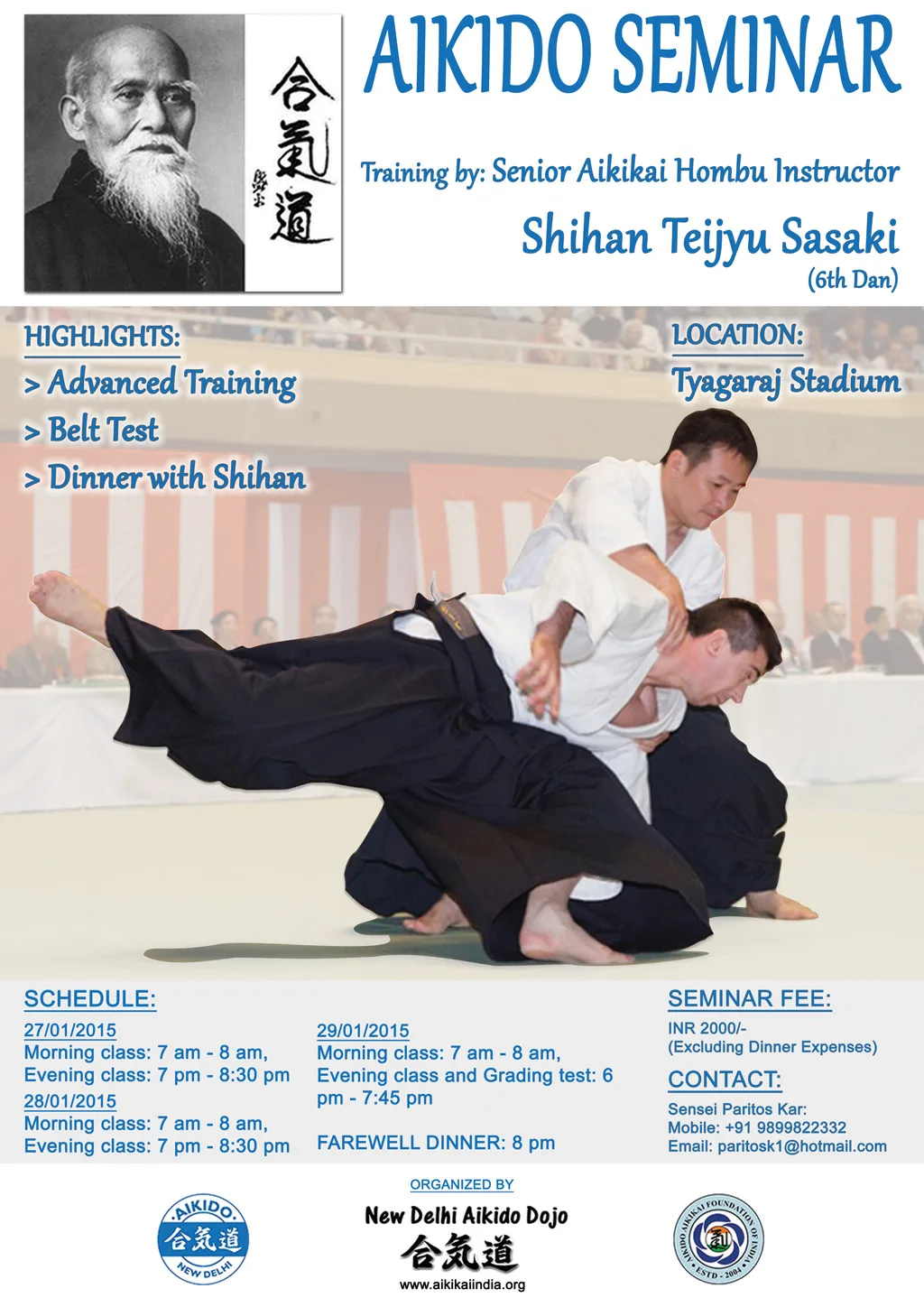Mysteries of the masters
Remember Sensei Sethi, the man who taught me Aikido? No? Doesn’t ring a bell?
Let me jog your memory a bit.
About a decade ago, while strolling through a park in south Delhi, I happened to see a portly figure engaging in a graceful dance-like tussle with two others. Their moves were elegant and one might even say gentle, and yet the martial quality of their actions was undeniable. Eventually, the burly gent whirled around and held his opponent’s arms, wrenching them with a degree of controlled fury that ended with his opponents writhing on the ground, their faces a twisted mask of agony and appreciation.
I went up to the group while it was engaged in the process of finding its feet again and asked what they were doing. I had read a bit about Tai Chi Chuan at the time though I hadn’t seen much of it. But the graceful expression of power in the master’s moves reminded me of the internal power that surreptitiously courses through the limbs of a true Tai Chi practitioner.
“No, this isn’t Tai Chi. We are practicing Aikido, a Japanese martial art that is as gentle as it is firm. However, Aikido draws influences from Baguazhang, an internal Chinese martial art, much like Tai Chi”, said the master. He wasnt a very big man. About 5’8″, but heavily built, and from a distance, with his heavy paunch and chubby arms, looked decidedly fat, but on closer inspection, all that chubbiness had this unshakeable dense quality about, much like a sumo wrestler’s, but on a far smaller scale. Since they were all wearing a ‘gi’, I should have realized that the art had Japanese origins. The master also wore a black skirt like wrap-around called a hakama. Only black-belts were allowed the wear them, I was told. But let’s not linger here for too long. After that intriguing introduction, I signed up for a few classes and was drawn to the art’s philosophy – created in the wake of World War II in a Japan that stood shamed, bruised and battered. Though potentially lethal, the techniques however allowed a practitioner to control the degree of punishment meted out to one’s opponent. Minimum force, maximum compassion seemed to be the aikidoka’s credo, which makes this art unique in the reasonably violent world of self-defense with its flying kicks and hammer punches.
One of the most interesting aspects of aikido is ‘ki’ training. A rough translation of the word ki would be ‘universal energy’. Aikidokas do a lot of breathwork at the end of every training session to try and align with the universal force and try and harness this energy and channel it though their bodies.
Legends and a few grainy videos would have you believe that ki training enabled the man who created Aikido, the venerable Morihei Ueshiba (1883 – 1969), to walk on the rim of tiny tea cups filled to the brim, without dropping a drop of tea. During the same demonstration, Morihei invited a few men from the audience to come up on stage and try and lift him up. Lifting or at least pushing the great master’s then frail 80 year old body, not many inches above five feet, should have been child’s play for most average sized men. For five of the biggest and burliest men in the audience, it would be easier than snapping a match-stick in two. But neither individually nor as a team could these men lift or even budge the little old Japanese master from his stance. It was an astonishing spectacle. Many other miraculous abilities are attributed to this great martial artist
They said he dodged a hail of bullets from border guards in Mongolia because he could see the trajectory of the bullets even as they were fired. Morihei’s miracles inspired my early practice but I guess I needed tangible evidence of this ki force.
I guess I had been pestering my teacher for a while. So on a balmy summer evening, Sensei Sethi decided that it was time for his students to sample the incredible force of ki.
By now, the class had shifted from the park to a gymnasium where we shared the floor with a muay thai group. We had finished our class and were wrapping up the evening with some ‘kokyoho’ – ki breath work, a bit like pranayama. The muay thai students were also done with their sparring and were sitting around their ‘ring’ and rolling glass bottles filled with sand all along their shins to toughen skin and bone so it could both deliver and take punishment.
In the idyll of the late evening, akidokas and nak muays were winding down after a tough workout, but our tired happiness was zapped out of its reverie when Sensei announced that it was time for us to feel the power of ki
Sensei declared that he would demonstrate the difference between muscular strength and the strength of the universal life force but for that we would need to test our muscular strength first. We arm wrestled each other to settle who was the strongest amongst us. My modest arms didn’t take me very far from the middle of the pack but who won the mini-tournament was the son of a local weight-lifting federation president and had been schooled well on the nuances of the iron game. The guy who came in second best was big and muscular and had beaten a hall full of well conditioned kickboxers and aikidokas but this beast beat his knuckles to pulp within mere seconds.
After the champ had rested, Sensei said that Aikido’s code of honour forbade him from trying to beat a competitor in a test of strength but he would hold us in the neutral position for as long as we wanted.
Anybody who has engaged in an arm-wrestling match would know that it is far tougher for an athlete to control the flow of strength and momentum and hold the neutral position against an opponent than it is to try and beat him. But one by one, we all pulled and pushed and wrestled and struggled but we couldn’t move his arm an inch. Nay, not even the beast.
While we gasped with awe and congratulated Sensei, he just nodded and without a trace of emotion, sat down in ‘seiza’ – on his knees and haunches, much like vajrasana. He extended his arms and asked three people to grab his right arm and three others to grab his left. He instructed us to push and pull as much as we could till he was thrown to the ground. We knew what we had already witnessed was pretty special but just in case he was just way too strong physically than the rest of us, this test, should Sensei succeed should put our doubts to rest.
Sensei had also announced that if he was truly using ki, even after we have all failed to dislodge him, he would still be breathing at a slow and easy pace and wouldn’t even have broken a sweat. We got into a huddle and agreed to push and pull with all our might.
The six of us heaved and hauled, pulled and pushed but all to no avail. We couldn’t move the man an inch. We were huffing and puffing and sweating buckets while Sensei just smiled beatifically. Then Sensei waved his arms, almost unmindful of the weight of three grown men on each arm, folded them and then extended them with a fair degree of force. Like ants on a branch swaying in a storm, we were flung one way and the other. Like cows caught in a tornado, we felt this force literally lift and push us trough our core and we went sprawling to the floor.
Stunned and exhausted, we lay on the floor for a while, struggling with the implications of our experience. “All ok, boys?”, boomed Sensei’s voice. I turned to look at him, as he towered over us, with a smile adorning his face and not a bead of sweat could I catch glistening on his temples. Sensei’s ki had truly made its point.
After a week or two from then, Sensei moved to Dehradun. He taught Aikido to some of the schools on the Doon-Mussourie circuit. He even stared a career as a performing ghazal singer and I lost touch with Aikido and him.
I missed the camaraderie of the classes and the joy of learning an art from an exceptional teacher and expressing myself through it. The strength and compassion that Aikido demanded was making me into a better person and I missed the person I was beginning to become. But most of all I missed that touch of the near divine – the pursuit of ki.
Dulled with the dust of time, I had forgotten all about Aikido until a recent call reignited that once bright flame. Sensei Sethi is back in town, I was told, and all the memories, and the montage from that evening stood out the boldest, came flooding back to me. This time, I will pursue and explore the elusive yet potent ‘ki’ with all the physical, spiritual, intellectual and emotional energy that I can muster. And like always, I will keep you updated on the adventures on the Aikido mat. Try on a class for size at a dojo near you meanwhile, for an Aikido class is one of those rare experiences that makes you both stronger and kinder in the same long breath…









You must be logged in to post a comment.